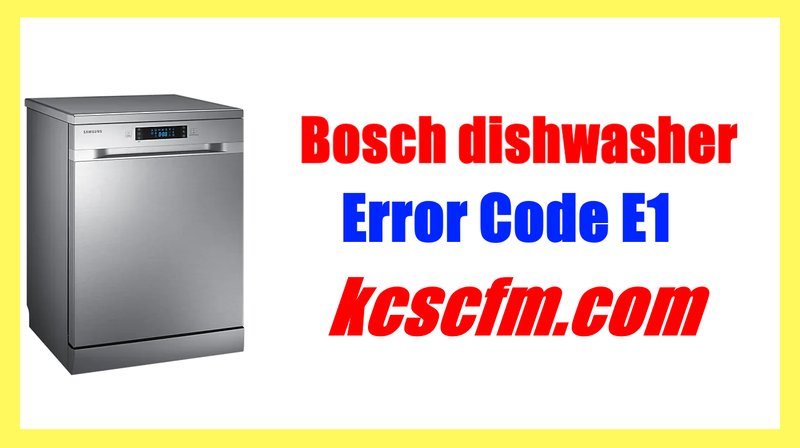
Now, let’s break this down a bit. Dishwashers, like your Bosch model, are pretty smart. They’re designed to detect when something isn’t quite right and give you a heads-up. The E1 error code is a way of alerting you to a potential issue with the water intake. Think of it like a car warning light that comes on to let you know something needs attention. If you’re dealing with this issue, it could be due to reasons like a clogged inlet valve or a kinked hose, similar to how a garden hose might struggle when it’s bent or blocked.
Understanding the Bosch Dishwasher E1 Error Code
You might be wondering how a dishwasher knows there’s an issue with the water supply. Well, Bosch dishwashers are equipped with sensors that monitor various functions, including water intake. When you see the E1 error code, it generally means that these sensors have detected insufficient water flow. Just like how a plant wilts without enough water, your dishwasher can’t function properly without the correct amount of water.
The E1 code can be triggered by several factors. For one, the water inlet valve, which controls the water flow into the dishwasher, might be faulty. Think of this valve like a gateway that allows just the right amount of water to enter; if it’s stuck, the gateway won’t open properly. Alternatively, there could be an issue with the water supply line, perhaps due to a blockage or a kink. Picture a pipe that’s bent out of shape—it restricts the flow of water, right?
Additionally, low water pressure from your home’s plumbing can also cause this error. Your dishwasher expects a certain amount of pressure to fill up in time, similar to expecting a certain water flow when filling a bathtub. If the pressure falls short, the dishwasher will alert you with the E1 code. Once you understand these causes, you’re one step closer to getting your dishwasher back on track.
Steps to Resolve the E1 Error Code
Alright, now that you know what could be causing the E1 error code, let’s talk about how to fix it! First things first, check the water supply. Make sure the water is actually turned on. You wouldn’t believe how often the solution is as simple as opening a tap! If the water supply is fine, take a look at the inlet valve. You can usually find it where the dishwasher connects to your house’s plumbing. If the valve looks damaged or clogged, it might need cleaning or replacement. It’s like when you clean a blocked sink to get the water flowing smoothly again.
Next, inspect the water hose. Make sure it’s not twisted or kinked. Think back to our garden hose analogy—straightening a kinked hose can work wonders for water flow. If everything looks fine, you might want to check the water pressure. You can use a gauge to measure the pressure, and if it’s low, contacting a plumber could be your best bet. They can help diagnose and fix any underlying plumbing issues causing low pressure.
Finally, if you’ve gone through all these steps and the E1 error still persists, it’s time to consider professional help. A certified Bosch technician can diagnose any more complex issues that might be at play. Sometimes, it’s better to leave it to the pros, especially if it involves dismantling parts that are tricky to reassemble.
Preventing Future E1 Error Codes
Now, let’s talk prevention. After all, it’s always better to avoid problems in the first place, right? Regular maintenance can keep your Bosch dishwasher running smoothly and prevent those pesky E1 error codes from popping up. Start by cleaning the inlet valve and hose every few months. This is like giving your car a regular oil change—it keeps things running efficiently and saves you from bigger issues down the road.
Also, keep an eye on your home’s water pressure. If you notice changes in water pressure around the house, don’t ignore them! Addressing these issues early can prevent not only dishwasher problems but other potential plumbing disasters as well. And of course, don’t forget to use the dishwasher as intended, without overloading it, which can stress the system.
In conclusion, while the E1 error code can be a hassle, understanding its cause and taking the right steps can have your Bosch dishwasher back in action in no time. With some basic troubleshooting, regular maintenance, and the occasional help from a professional, you can keep your dishwasher running smoothly for years to come. So the next time you see that E1 code, you’ll know exactly what to do!